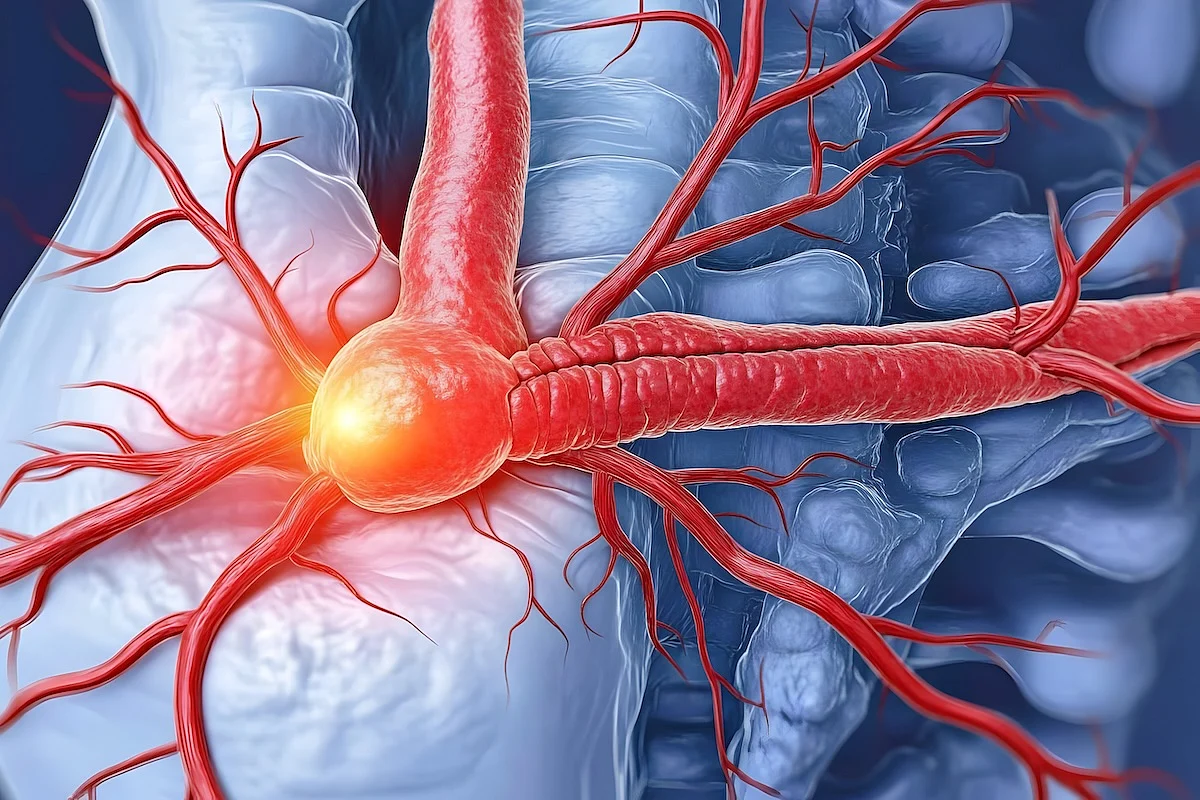Red Meat Might Increase Risk Of Potentially Deadly Abdominal Aneurysm
By Dennis Thompson HealthDay Reporter
 via HealthDay
via HealthDayFRIDAY, Aug. 22, 2025 — Chowing down on red meat might increase a person’s risk of a potentially deadly blood vessel problem of the abdomen, a new study says.
High blood levels of TMAO (trimethylamine N-oxide) — a byproduct of gut bacteria digestion of red meat and other animal-based foods — are linked to an increased risk of abdominal aortic aneurysm (AAA), researchers report in JAMA Cardiology.
AAA occurs when a bulge develops in the aorta, the large artery that runs through the torso, researchers said in background notes.
If this bulge ruptures, it is deadly in as many as 80% of cases that occur outside a hospital, researchers said.
“These results suggest targeting TMAO levels may help prevent and treat aneurysmal disease beyond surgery,” lead researcher Dr. Scott Cameron, section head of vascular medicine at the Cleveland Clinic, said in a news release.
Millions of patients develop AAA every year, researchers said.
Normally, the aorta’s wall is strong enough to handle the constant pressure of blood pumped from the heart. When a part of the aorta weakens, a dangerous bulge forms there, and as it grows larger so does the risk of it rupturing.
Currently, surgery or stenting are the only treatment options for AAA, Cameron said, and no blood tests are available to predict who’s at risk for an aneurysm.
AAA patients usually have no symptoms until the aorta ruptures, causing massive bleeding inside their torso, researchers said.
For the new study, researchers analyzed data from 237 Europeans and 658 Americans, including both healthy people and folks diagnosed with AAA.
Results showed that high blood levels of TMAO were linked to a more than tripled risk of AAA.
Elevated TMAO levels also were associated with a more than doubled risk of a fast-growing aneurysm that could be potentially dangerous, researchers said.
These results could lead to an effective blood test for AAA, researchers said.
They also could help people at risk for AAA take steps to protect themselves by cutting down on red meat, researchers said. Aging, smoking and other medical conditions are known to increase risk for the disorder.
“TMAO is made by gut microbes, with levels being higher when eating animal products and red meat,” senior researcher Dr. Stanley Hazen, chair of cardiovascular and metabolic sciences at the Cleveland Clinic, said in a news release.
“Medication targeting this pathway has been shown to block aneurysm development and rupture in preclinical models but are not yet available for humans,” he said. “These results are important to share because they show how important diet may be in helping prevent or treat patients with aorta dilation or early aneurysm compared to current clinical practice, which is to monitor until surgery is needed.”
However, further study is needed to directly link a diet heavy in red meat and animal products with AAA, researchers noted.
Sources
Disclaimer: Statistical data in medical articles provide general trends and do not pertain to individuals. Individual factors can vary greatly. Always seek personalized medical advice for individual healthcare decisions.
Source: HealthDay
Posted : 2025-08-23 00:00
Read more

Disclaimer
Every effort has been made to ensure that the information provided by Drugslib.com is accurate, up-to-date, and complete, but no guarantee is made to that effect. Drug information contained herein may be time sensitive. Drugslib.com information has been compiled for use by healthcare practitioners and consumers in the United States and therefore Drugslib.com does not warrant that uses outside of the United States are appropriate, unless specifically indicated otherwise. Drugslib.com's drug information does not endorse drugs, diagnose patients or recommend therapy. Drugslib.com's drug information is an informational resource designed to assist licensed healthcare practitioners in caring for their patients and/or to serve consumers viewing this service as a supplement to, and not a substitute for, the expertise, skill, knowledge and judgment of healthcare practitioners.
The absence of a warning for a given drug or drug combination in no way should be construed to indicate that the drug or drug combination is safe, effective or appropriate for any given patient. Drugslib.com does not assume any responsibility for any aspect of healthcare administered with the aid of information Drugslib.com provides. The information contained herein is not intended to cover all possible uses, directions, precautions, warnings, drug interactions, allergic reactions, or adverse effects. If you have questions about the drugs you are taking, check with your doctor, nurse or pharmacist.
Popular Keywords
- metformin obat apa
- alahan panjang
- glimepiride obat apa
- takikardia adalah
- erau ernie
- pradiabetes
- besar88
- atrofi adalah
- kutu anjing
- trakeostomi
- mayzent pi
- enbrel auto injector not working
- enbrel interactions
- lenvima life expectancy
- leqvio pi
- what is lenvima
- lenvima pi
- empagliflozin-linagliptin
- encourage foundation for enbrel
- qulipta drug interactions
